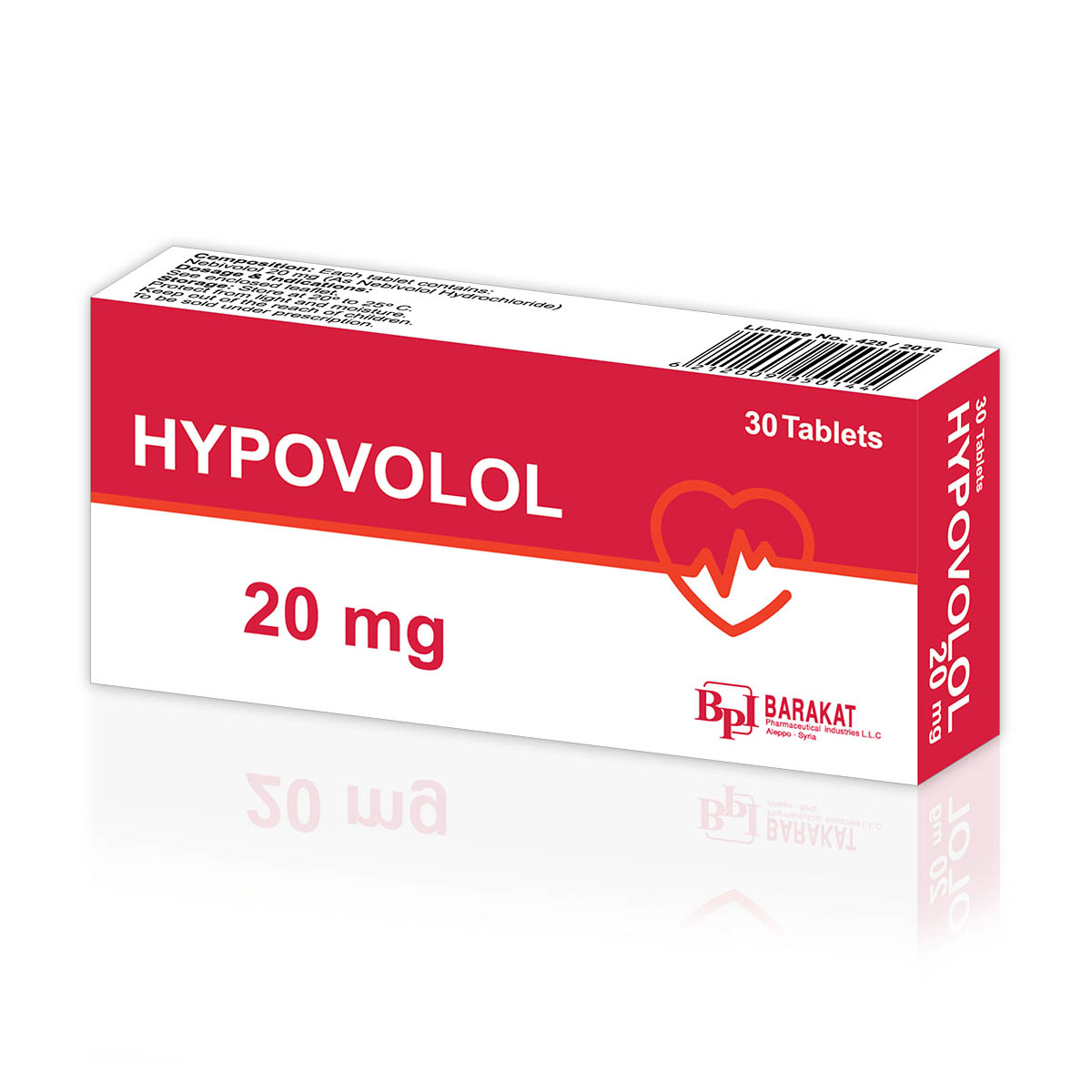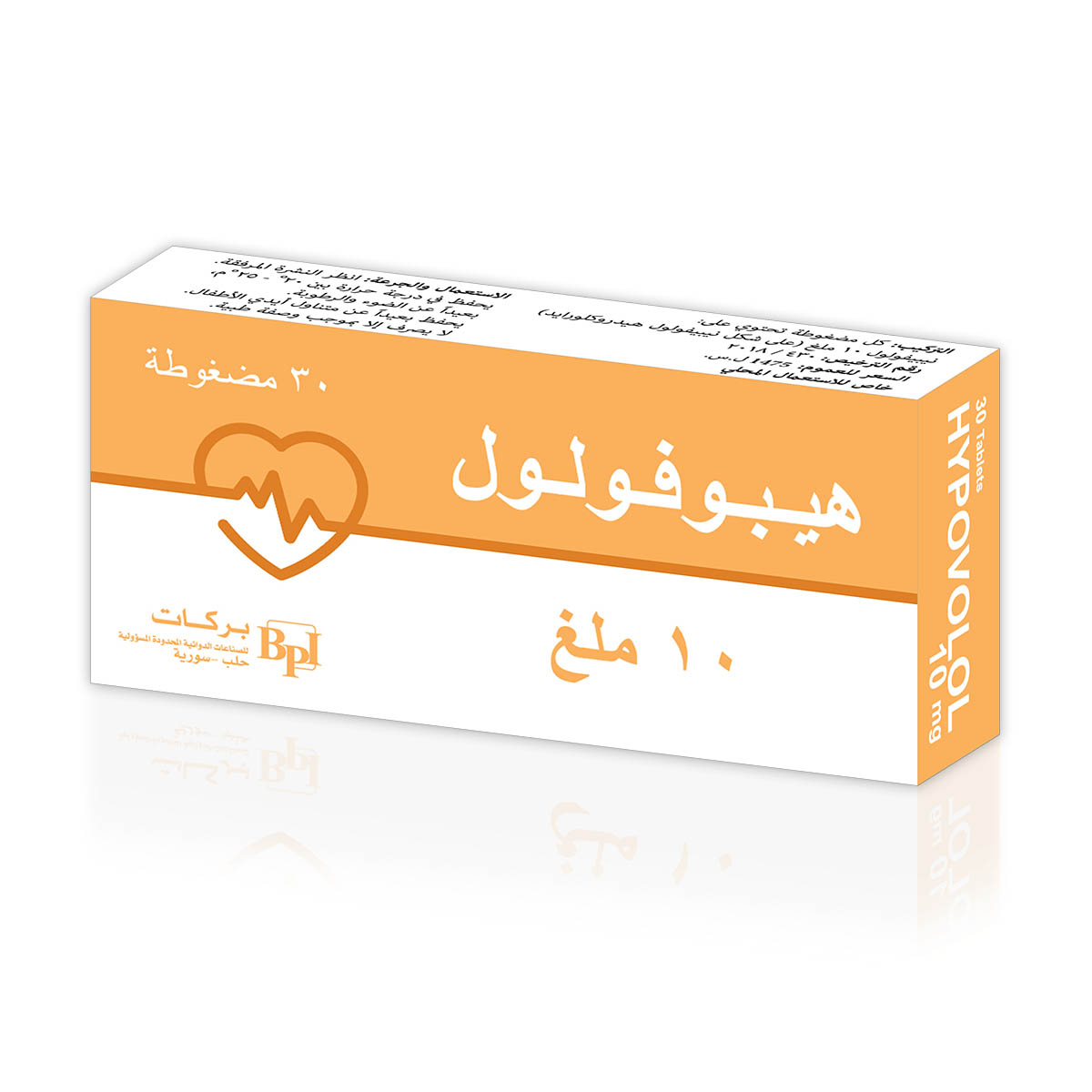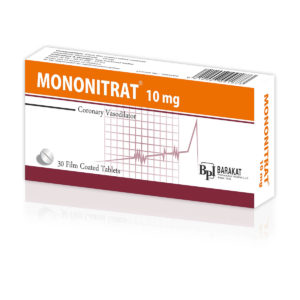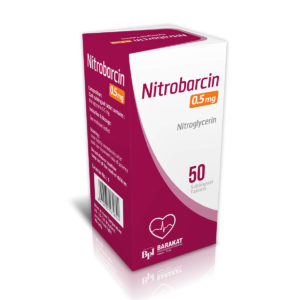Description
MECHANISM OF ACTION:
Nebivolol is a β-adrenergic receptor blocking agent.
The mechanism of action of the antihypertensive response of HYPOVOLOL has not been definitively established. Possible factors that may be involved include: (1) decreased heart rate, (2) decreased myocardial contractility, (3) diminution of tonic sympathetic outflow to the periphery from cerebral vasomotor centers, (4) suppression of renin activity and (5) vasodilation and decreased peripheral vascular resistance.
PHARMACOKINETICS:
Absorption:
Absorption of Nebivolol is similar to an oral solution. The absolute bioavailability has not been determined.
Mean peak plasma Nebivolol concentrations occur approximately 1.5 to 4 hours post-dosing.
Food does not alter the pharmacokinetics of Nebivolol. Under fed conditions, Nebivolol glucuronides are slightly reduced. Nebivolol may be administered without regard to meals.
Distribution:
The in vitro human plasma protein binding of Nebivolol is approximately 98%, mostly to albumin, and is independent of Nebivolol concentrations.
Metabolism:
Nebivolol is predominantly metabolized via direct glucuronidation of parent and to a lesser extent via N-dealkylation and oxidation via cytochrome P450 2D6. Its stereospecific metabolites contribute to the pharmacologic activity.
Elimination:
After a single oral administration of 14C-nebivolol, 38% of the dose was recovered in urine and 44% in feces for EMs and 67% in urine and 13% in feces for PMs. Essentially all Nebivolol was excreted as multiple oxidative metabolites or their corresponding glucuronide conjugates.
INDICATIONS AND USAGE:
Hypertension:
HYPOVOLOL is indicated for the treatment of hypertension, to lower blood pressure.
HYPOVOLOL may be used alone or in combination with other antihypertensive agents.
CONTRAINDICATIONS:
HYPOVOLOL is contraindicated in the following conditions:
- Severe bradycardia.
- Heart block greater than first degree.
- Patients with cardiogenic shock.
- Decompensated cardiac failure.
- Sick sinus syndrome (unless a permanent pacemaker is in place).
- Patients with severe hepatic impairment.
- Patients who are hypersensitive to any component of this product.
WARNINGS AND PRECAUTIONS:
Abrupt Cessation of Therapy
Do not abruptly discontinue Nebivolol therapy in patients with coronary artery disease. Severe exacerbation of angina, myocardial infarction and ventricular arrhythmias have been reported in patients with coronary artery disease following the abrupt discontinuation of therapy with β-blockers.
Myocardial infarction and ventricular arrhythmias may occur with or without preceding exacerbation of the angina pectoris. Caution patients without overt coronary artery disease against interruption or abrupt discontinuation of therapy. As with other β-blockers, when discontinuation of Nebivolol is planned, carefully observe and advise patients to minimize physical activity. Taper Nebivolol over 1 to 2 weeks when possible. If the angina worsens or acute coronary insufficiency develops, re-start Nebivolol promptly, at least temporarily.
Angina and Acute Myocardial Infarction:
Nebivolol was not studied in patients with angina pectoris or who had a recent MI.
Bronchospastic Diseases:
In general, patients with bronchospastic diseases should not receive β-blockers.
Anesthesia and Major Surgery:
Because beta-blocker withdrawal has been associated with an increased risk of MI and chest pain, patients already on beta-blockers should generally continue treatment throughout the perioperative period. If Nebivolol is to be continued perioperatively, monitor patients closely when anesthetic agents which depress myocardial function, such as ether, cyclopropane, and trichloroethylene, are used.
If β-blocking therapy is withdrawn prior to major surgery, the impaired ability of the heart to respond to reflex adrenergic stimuli may augment the risks of general anesthesia and surgical procedures.
The β-blocking effects of Nebivolol can be reversed by β-agonists, e.g., dobutamine or isoproterenol. However, such patients may be subject to protracted severe hypotension. Additionally, difficulty in restarting and maintaining the heartbeat has been reported with β-blockers.
Diabetes and Hypoglycemia:
β-blockers may mask some of the manifestations of hypoglycemia, particularly tachycardia. Nonselective β-blockers may potentiate insulin-induced hypoglycemia and delay recovery of serum glucose levels. It is not known whether Nebivolol has these effects. Advise patients subject to spontaneous hypoglycemia and diabetic patients receiving insulin or oral hypoglycemic agents about these possibilities.
Thyrotoxicosis:
β-blockers may mask clinical signs of hyperthyroidism, such as tachycardia. Abrupt withdrawal of β- blockers may be followed by an exacerbation of the symptoms of hyperthyroidism or may precipitate a thyroid storm.
Peripheral Vascular Disease:
β-blockers can precipitate or aggravate symptoms of arterial insufficiency in patients with peripheral vascular disease.
Non-dihydropyridine Calcium Channel Blockers:
Because of significant negative inotropic and chronotropic effects in patients treated with β-blockers and calcium channel blockers of the verapamil and diltiazem type, monitor the ECG and blood pressure in patients treated concomitantly with these agents.
Use with CYP2D6 Inhibitors:
Nebivolol exposure increases with inhibition of CYP2D6. The dose of Nebivolol may need to be reduced.
Impaired Renal Function:
Renal clearance of Nebivolol is decreased in patients with severe renal impairment. Nebivolol has not been studied in patients receiving dialysis.
Impaired Hepatic Function:
Metabolism of Nebivolol is decreased in patients with moderate hepatic impairment. Nebivolol has not been studied in patients with severe hepatic impairment.
Risk of Anaphylactic Reactions:
While taking β-blockers, patients with a history of severe anaphylactic reactions to a variety of allergens may be more reactive to repeated accidental, diagnostic, or therapeutic challenge. Such patients may be unresponsive to the usual doses of epinephrine used to treat allergic reactions.
Pheochromocytoma:
In patients with known or suspected pheochromocytoma, initiate an α-blocker prior to the use of any β- blocker.
ADVERSE REACTIONS:
Bradycardia, diarrhea, nausea, fatigue, chest pain, peripheral edema, headache, dizziness, insomnia, dyspnea, rash, asthenia, abdominal pain, hypercholesterolemia, paraesthesia.
DRUG INTERACTIONS:
CYP2D6 Inhibitors:
Use caution when Nebivolol is co-administered with CYP2D6 inhibitors (quinidine, propafenone, fluoxetine, paroxetine, etc.)
Hypotensive Agents:
Do not use Nebivolol with other β-blockers. Closely monitor patients receiving catecholamine depleting drugs, such as reserpine or guanethidine, because the added β-blocking action of Nebivolol may produce excessive reduction of sympathetic activity. In patients who are receiving Nebivolol and clonidine, discontinue Nebivolol for several days before the gradual tapering of clonidine.
Digitalis Glycosides:
Both digitalis glycosides and β-blockers slow atrioventricular conduction and decrease heart rate. Concomitant use can increase the risk of bradycardia.
Calcium Channel Blockers:
Nebivolol can exacerbate the effects of myocardial depressants or inhibitors of AV conduction, such as certain calcium antagonists (particularly of the phenylalkylamine [verapamil] and benzothiazepine [diltiazem] classes), or antiarrhythmic agents, such as disopyramide.
PREGNANCY:
There are risks to the mother and fetus associated with poorly controlled hypertension in pregnancy. The use of beta blockers during the third trimester of pregnancy may increase the risk of hypotension, bradycardia, hypoglycemia, and respiratory depression in the neonate. Oral administration of Nebivolol to pregnant rats during organogenesis resulted in embryofetal and perinatal lethality at doses approximately equivalent to the maximum recommended human dose (MRHD).
LACTATION:
There is no information regarding the presence of Nebivolol in human milk, the effects on the breastfed infant, or the effects on milk production. Nebivolol is present in rat milk. Because of the potential for β-blockers to produce serious adverse reactions in nursing infants, especially bradycardia, Nebivolol is not recommended during nursing.
PEDIATRIC USE:
Safety and effectiveness in pediatric patients have not been established. Pediatric studies in ages newborn to 18 years old have not been conducted because of incomplete characterization of developmental toxicity and possible adverse effects on long-term fertility.
OVERDOSAGE:
The most common signs and symptoms associated with Nebivolol overdosage are bradycardia and hypotension. Other important adverse reactions reported with Nebivolol overdose include cardiac failure, dizziness, hypoglycemia, fatigue and vomiting. Other adverse reactions associated with β- blocker overdose include bronchospasm and heart block.
Because of extensive drug binding to plasma proteins, hemodialysis is not expected to enhance Nebivolol clearance.
If overdose occurs, provide general supportive and specific symptomatic treatment. Based on expected pharmacologic actions and recommendations for other β-blockers, consider the following general measures, including stopping Nebivolol, when clinically warranted:
Bradycardia: Administer IV atropine. If the response is inadequate, isoproterenol or another agent with positive chronotropic properties may be given cautiously. Under some circumstances, transthoracic or transvenous pacemaker placement may be necessary.
Hypotension: Administer IV fluids and vasopressors. Intravenous glucagon may be useful.
Heart Block (second or third degree): Monitor and treat with isoproterenol infusion. Under some circumstances, transthoracic or transvenous pacemaker placement may be necessary.
Congestive Heart Failure: Initiate therapy with digitalis glycoside and diuretics. In certain cases, consider the use of inotropic and vasodilating agents.
Bronchospasm: Administer bronchodilator therapy such as a short acting inhaled β-agonist and/or aminophylline.
Hypoglycemia: Administer IV glucose. Repeated doses of IV glucose or possibly glucagon may be required.
Supportive measures should continue until clinical stability is achieved. The half-life of low doses of Nebivolol is 12-19 hours.
DOSAGE AND ADMINISTRATION:
Hypertension
The dose of Nebivolol must be individualized to the needs of the patient. For most patients, the recommended starting dose is 5 mg once daily, with or without food, as monotherapy or in combination with other agents. For patients requiring further reduction in blood pressure, the dose can be increased at 2-week intervals up to 40 mg. A more frequent dosing regimen is unlikely to be beneficial.
Renal Impairment:
In patients with severe renal impairment (ClCr less than 30 mL/min) the recommended initial dose is 2.5 mg once daily; titrate up slowly if needed. Nebivolol has not been studied in patients receiving dialysis.
Hepatic Impairment:
In patients with moderate hepatic impairment, the recommended initial dose is 2.5 mg once daily; titrate up slowly if needed. Nebivolol has not been studied in patients with severe hepatic impairment and therefore it is not recommended in that population.
Geriatric Patients:
It is not necessary to adjust the dose in the elderly.
CYP2D6 Polymorphism:
No dose adjustments are necessary for patients who are CYP2D6 poor metabolizers. The clinical effect and safety profile observed in poor metabolizers were similar to those of extensive metabolizers.
STORAGE:
Store at 20° to 25°C from light and moisture.
HOW SUPPLIED:
Boxes of 30 tablets in blister.









